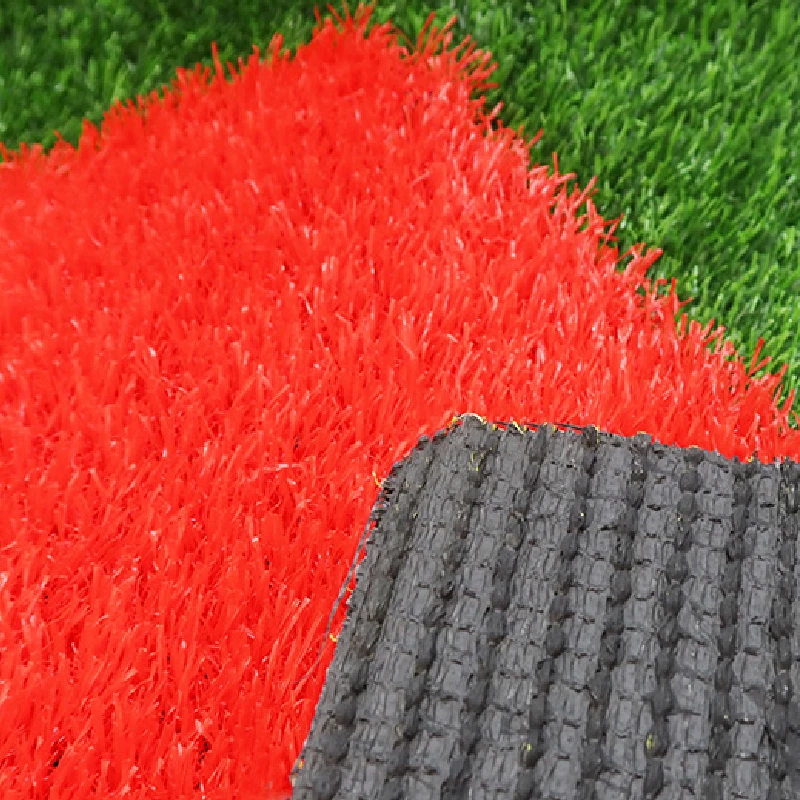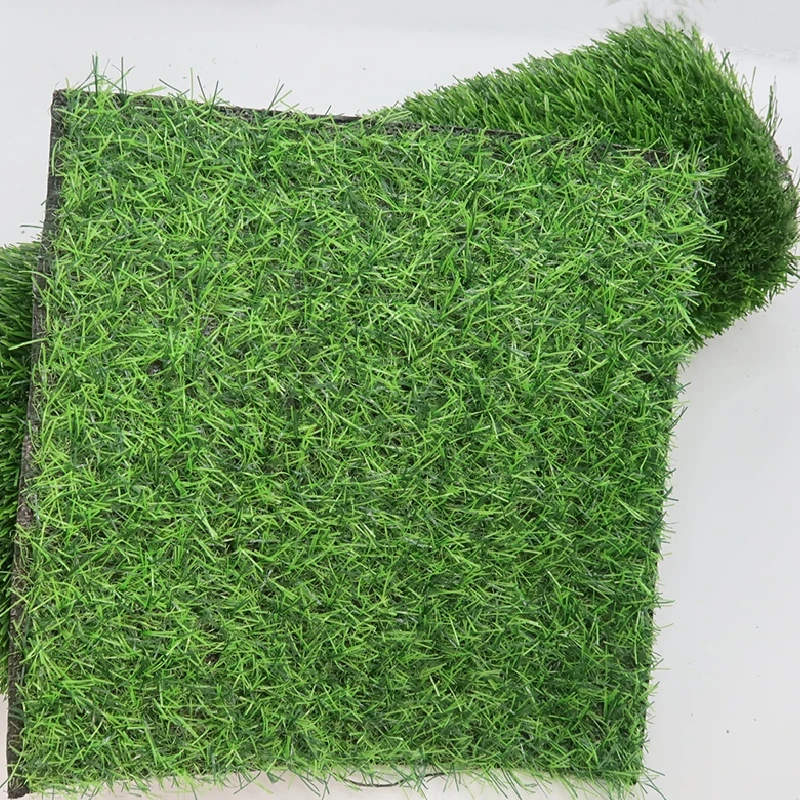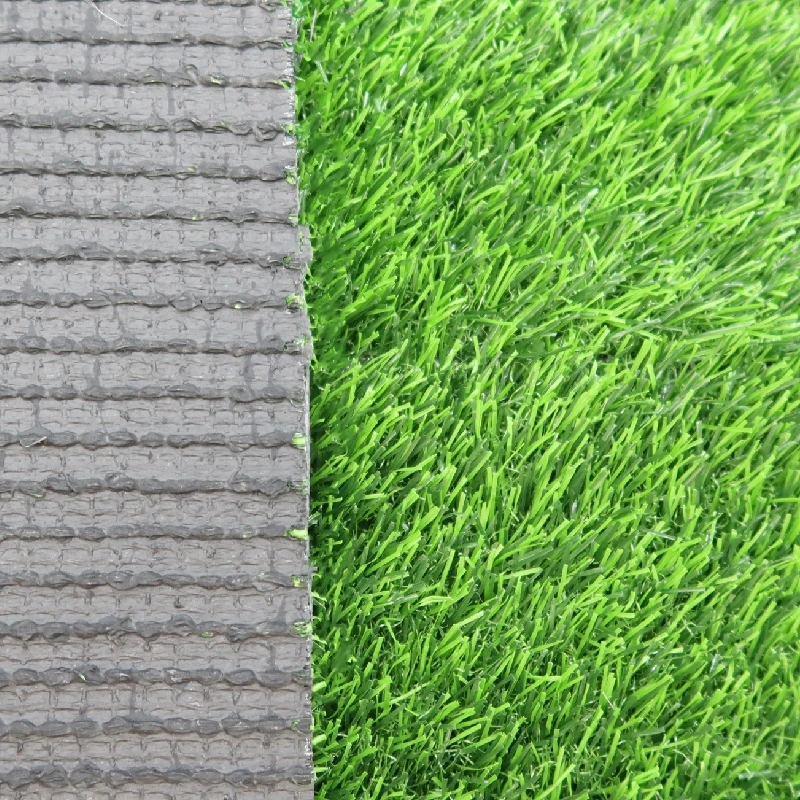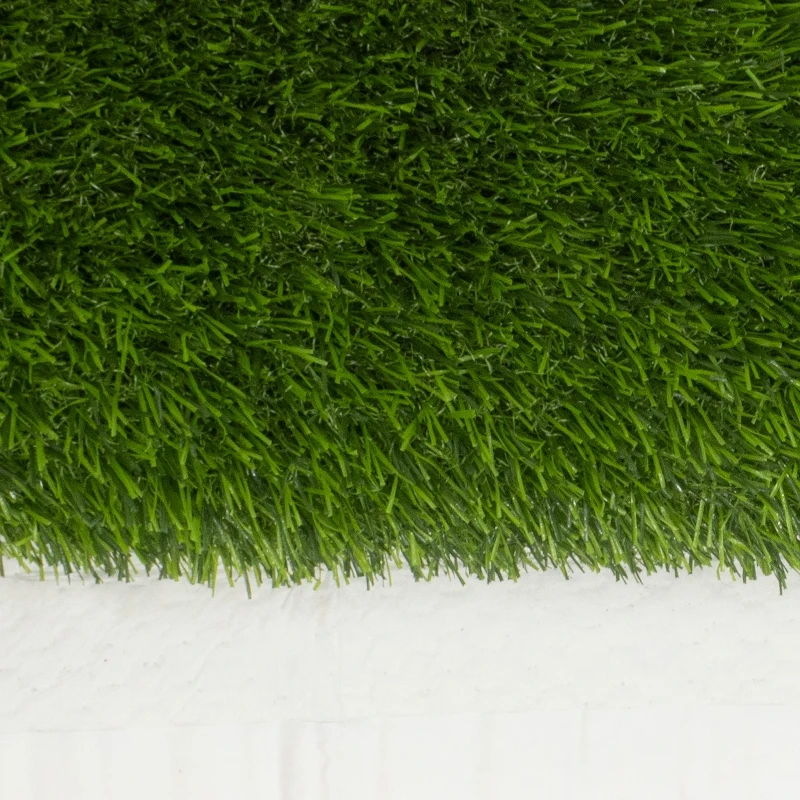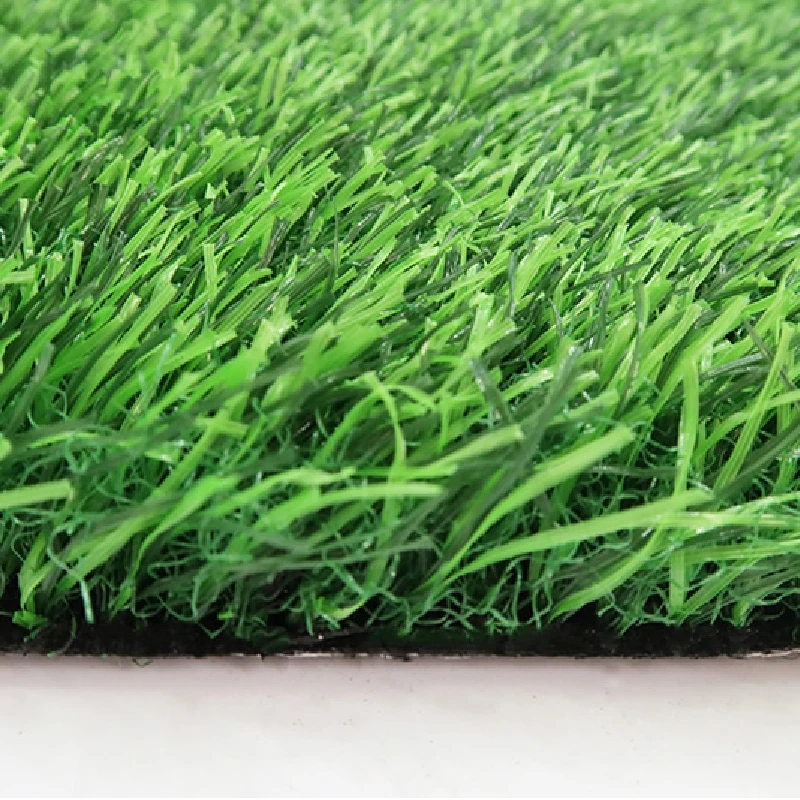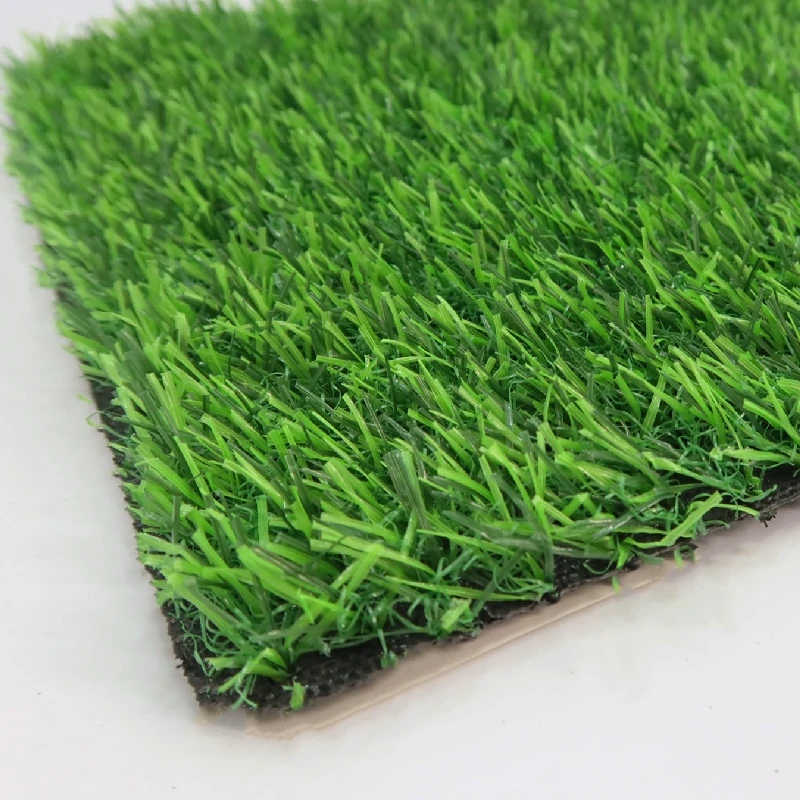Synthetic Turf Field Solutions | Durable, Eco-Friendly Sports Surfaces
Nov . 18, 2025 22:30 Back to list
What Exactly Is a Synthetic Turf Field and Why Should We Care?
If you’ve watched a football match or even a community kids’ soccer game in the last decade, chances are you’ve seen synthetic turf fields in action. But these aren’t just about pretty green grass that never needs mowing. They represent a quiet revolution in sports infrastructure, urban planning, and even environmental management around the globe.
The synthetic turf field, simply put, is a surface made from synthetic fibers designed to resemble natural grass. However, it’s far more than just fake grass. It addresses the global challenges of water scarcity, maintenance costs, and land-use efficiency — all issues the United Nations and environmental bodies have flagged as growing concerns for urban and rural spaces alike. Understanding its role and potential is key, especially when leagues, schools, or municipalities look for a long-lasting, adaptable playing surface.
Mini takeaway: Synthetic turf fields blend innovation with necessity, serving environmental, economic, and social goals worldwide.
Why Synthetic Turf Fields Matter on a Global Scale
Let’s zoom out a bit. According to the Food and Agriculture Organization (FAO) and reports from the World Bank, nearly 70% of global freshwater is used for agriculture and landscaping. Traditional grass fields contribute significantly to this demand, calling for frequent watering — something increasingly unfeasible, especially in drought-prone areas.
Additionally, ISO standards for quality and sustainability are shaping synthetic turf technology, promoting surfaces with recyclable materials and reduced toxins. These fields also help solve the problem of overuse: natural grass can get ruined after a few heavy games or bad weather, but synthetic turf stands firm.
So, it’s no surprise that synthetic turf fields are gaining traction in regions from the arid American Southwest to the flood-prone parts of Asia. They align well with global commitments to sustainable development (SDG 6 — Clean Water and Sanitation being just one example).
Mini takeaway: Synthetic turf answers a modern dilemma — how to make green spaces durable, eco-friendly, and user-ready anywhere on earth.
Defining Synthetic Turf Fields in Real Terms
Simply put, a synthetic turf field is manufactured with layers. At the surface, synthetic fibers mimic the look and feel of blades of grass, often made from polyethylene or nylon. Beneath that lies a shock-absorbing backing and infill materials, like rubber granules or sand, which provide cushioning and stability. It’s a bit like an engineered mattress for athletes and kids playing outside.
Industries from professional sports to urban development and disaster recovery rely on such fields. For humanitarian ventures, synthetic turf can quickly offer safe, flat play areas in camps or temporary settlements, boosting morale and normalcy in difficult situations. Oddly enough, it’s sometimes one of the first signs of rebuilding community spirit.
Core Components That Make Synthetic Turf Fields Work
Durability: Built to Outlast Many Seasons
Modern synthetic turf can last 8–15 years under heavy use. UV-resistant fibers prevent sun damage, while the backing holds its shape after rain or freezing temperatures. That endurance is why many school districts opt for artificial turf to save maintenance headaches.
Scalability: From Backyard to Stadium
Whether it’s a neighborhood pitch or a multi-purpose stadium, synthetic turf fields can be scaled and customized. Large industrial manufacturers offer modular rolls that installers piece together flawlessly — it’s kind of like a big green puzzle.
Cost Efficiency: A Long-Term Investment
While installation may seem pricey upfront, the savings over time on water, fertilizers, mowing, and re-seeding add up. Municipalities estimate a 30-50% reduction in upkeep costs yearly when switching to turf.
Safety & Performance
Properly installed synthetic fields reduce injury risk—providing consistent traction and shock absorption. Sports scientists and coaches appreciate how the field’s uniformity affects play quality.
Environmental Sustainability
Though made of plastics, many systems incorporate recycled materials and are fully recyclable themselves. New innovations focus on biodegradable infills and cooler surface tech to reduce urban heat island effects.
Where in the World Are Synthetic Turf Fields Making an Impact?
From European soccer leagues to high school football fields in the USA, synthetic turf is everywhere. But it’s also vital in unexpected areas:
- Post-disaster zones: After earthquakes or floods, quickly laid turf provides a safe space for children to play and community events.
- Remote industrial zones: Mining sites or oil rigs use turf for recreation areas, where soil quality or water scarcity prevents real grass.
- Urban Parks in Water-Scarce Cities: Cities like Phoenix or Dubai install synthetic fields in parks to sustain greenery without draining aquifers.
Organizations like FIFA encourage synthetic turf leagues especially where real grass is impractical. It’s a standard, trusted solution that’s growing beyond stadiums.
Mini takeaway: Synthetic turf fields serve myriad roles globally—from high-stake competitions to quiet community rebuilding.
The Tangible Benefits and Lasting Value of Synthetic Turf Fields
Cost savings, durability, and environmental benefits aside, synthetic turf fields offer psychological advantages. The safe, well-maintained surface encourages youth participation in sports, promotes social inclusion, and supports mental health.
Coach Maria Thompson from Texas shared how switching to TurfPro synthetic fields led to a 40% uptick in local youth soccer sign-ups. “Kids feel proud of their field — it’s always ready, rain or shine,” she remarked.
Trust, safety, and innovation combine here. These are not just synthetic patches of ground — they’re social assets that communities cherish.
Looking Ahead: Trends Shaping the Future of Synthetic Turf
What’s next? We’re seeing several exciting innovations:
- Eco-friendly materials: Bio-based polymers and organic infill compounds are reducing plastic footprints.
- Smart fields: Embedded sensors measuring wear, hydration, and usage help maintenance teams act preemptively.
- Cooling technologies: New fibers reflect heat, making fields more comfortable even under blazing sun.
- Modular design: Quick disassembly allows relocation or repurposing, aligning with circular economy principles.
Challenges We Can’t Ignore (And How to Tackle Them)
Synthetic turf isn’t perfect. Concerns about microplastic runoff, initial installation costs, and heat retention often arise. Many engineers emphasize the need for proper drainage and regular vacuuming to reduce pollutants. Some manufacturers now offer programs to recycle old turf, trying to close the loop.
Still, the key may lie in local adaptation — tailoring material choices and system setups to climate and use-case specifics for best sustainability & performance.
Quick FAQs About Synthetic Turf Fields
-
How long does a synthetic turf field typically last?
Most systems are designed for 8 to 15 years, depending on usage and maintenance. High-traffic fields might need replacement sooner, but regular upkeep extends life dramatically. -
Is synthetic turf better than natural grass environmentally?
In many ways, yes — synthetic turf uses far less water, pesticides, and fertilizers. However, some concerns remain around plastic waste, so choosing eco-certified options helps. -
Can synthetic turf fields handle rainy or snowy climates?
Absolutely. Proper drainage and UV-resistant materials ensure synthetic turf performs well in wet or cold conditions, sometimes better than real grass. -
Are synthetic turf fields safe for young athletes?
When installed correctly with appropriate infills and shock pads, synthetic turf meets safety standards, reducing injury risks and providing consistent footing. -
How do I choose the best vendor for a synthetic turf project?
Look for vendors with proven installations, warranty options, material certifications, and local support. Compare product specs and post-installation service closely.
Quick Glance: Typical Synthetic Turf Field Specifications
| Specification | Typical Value | Notes |
|---|---|---|
| Turf Fiber Material | Polyethylene / Nylon blend | UV stabilized for durability |
| Pile Height | 35–50 mm | Varies by sport / design |
| Infill Type | Rubber crumb & silica sand | Alternative organic options available |
| Shock Pad Thickness | 10–15 mm | Reduces impact for players |
| Installation Time | 2–4 weeks (for a standard football field) | Depends on site conditions |
Vendor Overview: Comparing Leading Synthetic Turf Providers
| Vendor | Material Quality | Warranty | Eco Credentials | Installation Support |
|---|---|---|---|---|
| GreenPlay Turf | High UV resistance | 10 years | Recycled infill products | On-site and remote |
| PlayRight Systems | Premium fiber thickness | 8 years | ISO 14001 certified | Full turnkey projects |
| EcoField Innovations | Biodegradable infills | 7 years | Green Seal certified | Consultancy only |
Bringing It All Together
Ultimately, synthetic turf fields aren’t just a convenience — they’re an intersection of innovation, sustainability, and human experience. They meet real global challenges, serve diverse users, and continue evolving with new technologies. Whether it’s a crowded urban park, a professional stadium, or a post-disaster relief area, these fields symbolize resilience and foresight.
If you’re considering the best synthetic turf solutions for your project, check out our trusted range. We blend cutting-edge materials with field-tested expertise to keep your turf green, safe, and sustainable for years to come.
Mini takeaway: Choosing the right synthetic turf is choosing a future-ready surface that saves resources and supports communities.
References
-
Durable, Eco-Friendly Turf for Balcony | Enhance Your Urban Space
NewsNov.24,2025
-
Turf Between Pavers: Sustainable Green Paving Solutions for Modern Urban Spaces
NewsNov.24,2025
-
Discover the Benefits of Turf and Pavers Backyard | Sustainable Outdoor Design
NewsNov.24,2025
-
Top Quality Artificial Grass – Sustainable, Durable, and Stylish Turf Solutions
NewsNov.24,2025
-
Durable and Eco-Friendly Thick Artificial Grass Solutions | Hoya Grass
NewsNov.24,2025
-
Synthetic Turf: Sustainable Green Solutions for Sports, Industry & Urban Living
NewsNov.24,2025
Products categories



